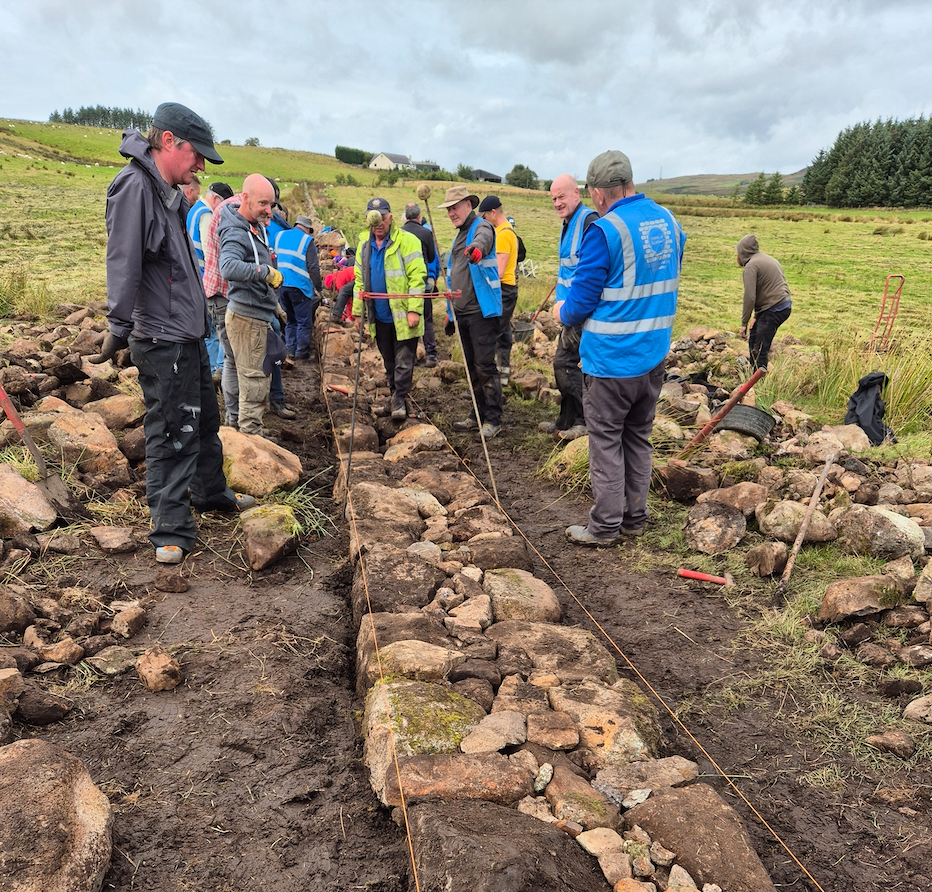
At Borebrae, we’re always looking to expand our skills, and when I had the opportunity to attend a dry stone walling course, I jumped at the chance. The course, run by the West of Scotland Dry Stone Walling Association, was a fantastic way to delve into a centuries-old craft that is not only functional but beautiful and timeless.
Before attending the course, I was involved in a project for a client who wanted to extend a short section of path running along a burn in their garden. To make the most of this natural feature, we decided to build a simple gravel walkway using slabs and stones salvaged from other parts of the garden.

As we worked on the project, we found a small hollow in the bank that seemed like the perfect spot for a bench, creating a peaceful place to sit and enjoy the sound of the water. It also gave me the opportunity to try my hand at dry stone walling, something I’ve dabbled in before as an enthusiastic amateur. This experience reinforced my interest in working with stone and motivated me to sign up for the dry stone walling course with the West of Scotland Dry Stone Walling Association to develop my skills and knowledge.

Dry stone walling is a collaborative process where each waller works closely with others, learning how to create walls that are both sturdy and visually striking. We were guided through the essential steps of building a dry stone wall, from understanding key terms like hearting stones (small stones that provide stability in the middle of the wall) to through stones (long stones that span both faces of the wall for strength). I discovered that dry stone walling is more than just a solitary task; it’s about teamwork. Each participant works alongside others, making sure our work fits together into a cohesive whole.

The layout of the wall is marked by metal pins and string to guide the placement of each stone, ensuring the finished wall has a consistent inward batter and clean, level courses.

One of the most significant aspects of dry stone walling is getting the foundation right. The foundation stones, which are the largest and heaviest, need to be carefully placed to provide stability for the entire structure.

As the course progressed, I learned how to add building stones, ensuring the faces of the wall were tightly packed, creating an even profile.


We even tackled the intricate work of placing cope stones—rounded stones that sit on top to secure the wall from the elements.

The process, though physically demanding, is incredibly rewarding. As I worked through the different stages—foundation, building, and coping—I began to appreciate the unique beauty that comes from combining natural materials with skilled craftsmanship.
One of the reasons I wanted to take the course was to explore how dry stone walling could fit into contemporary garden designs. The technique’s enduring charm can be seen in both traditional and modern landscapes, providing a natural, rustic feel that enhances the surroundings. Whether as a boundary, a raised bed, or a decorative feature, a well-built dry stone wall can add a timeless element to any space.
This course wasn’t just about learning a new skill—it was about connecting with the landscape in a deeper way, understanding how stone can be used to shape our surroundings, and seeing the beauty in the process of building something by hand. It’s definitely a technique I look forward to integrating into future projects at Borebrae.

Leave a Reply